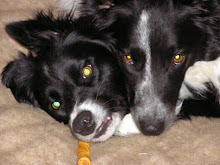Chapter Three: The Borders of Narrative
This chapter contained some definitions that I thought would be fun to share with all of you. These aren't anything wildly new, but things I encounter often when I read and, as usual, had never considered whether or not they actually had a name. I've been taking my reading for granted again! :-) Most of this chapter dealt with narratives which contain a story, but there are other stories within them. Sometimes these are obvious, and sometimes they are just small, unobtrusive fragments.
Framing Narrative: An embracing narrative acting as a framework within which a multitude of tales are told. The Canterbury Tales and A Thousand and One Nights are examples.
Embedded Narrative: The narrative within a narrative. It is also not uncommon to find embedded narratives within embedded narratives. Thinking about recent books I've read, it occurred to me that The Historian had a lot of this. There was the larger story arc, then all the letters written by the researchers telling their stories, and the stories in the letters of the people the researchers were talking to.
Paratexts: Tangential material that may inflect our experience of the narrative, sometimes subtly, sometimes deeply. These would include book jacket blurbs, book reviews, interviews with the author, essays, etc. All of these have the potential to affect our view of what we are reading, and our reading experience may have been different had we not had exposure to a particular paratext.
Hypertext Narrative: That subset of electronic narrative that makes use of the hypertext linking function to allow readers to shift instantaneously to other virtual spaces in which almost anything can be found.
That last one was particularly interesting. I had never considered hypertext linking as a fictional narrative device potentially allowing the reader to experience a story in multiple variations. Did you ever read any of those "Choose Your Own Ending" books? This is like the ultimate version of that! A talented author could have a field day! I've never looked for a book purposely written in that form, but they're out there somewhere. Have any of you ever seen or read one?










3 comments:
those are great terms. Thanks for sharing them.
Thanks for teaching me something today, Lezlie! I never knew all that tangential material actually had a name...paratexts.
Serena ~ Thanks! I'm finding all kinds of things in this text that I didn't know had names. Everytime I pick this up I learn something cool!
JoAnn ~ Me neither! Next time we write our thoughts on a book, we can say erudite things like, "The paratexts with which I came into contact led me to expect a different outcome." :-)
Lezlie
Post a Comment